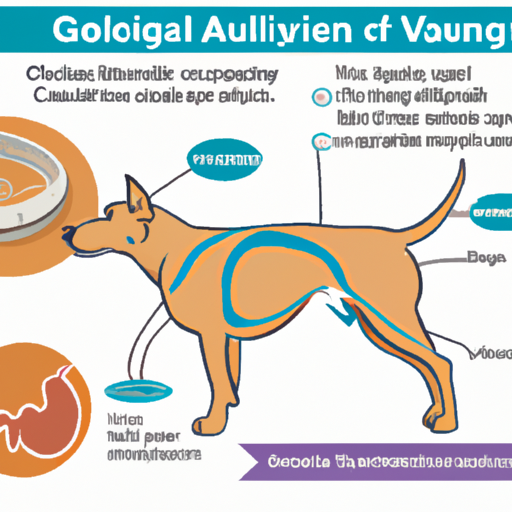As a devoted caregiver, understanding your dog’s health is a top priority. Among the numerous conditions that can affect our furry friends, Gastric Dilatation-Volvulus, or GDV, is one of the most severe. This guide will equip you with the crucial information you need about GDV in dogs.
Understanding GDV in Dogs
GDV, often referred to as bloat or twisted stomach, is a life-threatening condition in dogs where the stomach fills with gas and rotates, preventing the gas from escaping and cutting off blood supply. This condition is most common in large, deep-chested breeds but can affect any dog.
Causes and Risk Factors for GDV
Although the exact cause of GDV is not entirely understood, various risk factors are linked to this condition. These include:
- Breed: Large breeds with deep chests are at the highest risk. This includes Great Danes, Saint Bernards, and Weimaraners.
- Age: Older dogs are more susceptible to GDV.
- Diet: Dogs fed with one large meal a day, or those eating rapidly are more at risk.
- Activity: Vigorous activity after eating can also contribute to the development of GDV.
| Risk Factor | Explanation |
|---|---|
| Breed | Large, deep-chested dogs are more susceptible |
| Age | Older dogs are more likely to suffer from GDV |
| Diet | Eating one large meal or eating rapidly increases risk |
| Activity | Vigorous activity after meals can lead to GDV |
Recognizing the Symptoms of GDV
Early detection of GDV can make a significant difference in your dog’s prognosis. Be watchful for the following signs:
- Restlessness or pacing
- Distended or swollen abdomen
- Attempting to vomit without success
- Excessive drooling
- Rapid breathing
- Weakness or collapse
Treatment and Prevention of GDV
GDV is a medical emergency requiring immediate veterinary intervention. Treatment usually involves stabilizing the dog, decompressing the stomach, and surgery to correct the twist and prevent future occurrences.
Prevention strategies, while not foolproof, can help reduce the risk:
- Feed your dog smaller, more frequent meals.
- Avoid vigorous activity immediately after meals.
- Consider a preventative surgery called gastropexy for breeds at high risk.
FAQs about GDV in Dogs
Is GDV in dogs fatal?
Yes, if left untreated, GDV can be fatal within a matter of hours. It’s essential to seek immediate veterinary care if you suspect your dog has GDV.
Can small dogs get GDV?
While GDV is more common in larger breeds, it can affect dogs of any size and breed.
How is GDV diagnosed?
GDV is typically diagnosed based on a dog’s symptoms, physical examination, and X-rays.
Can GDV be prevented?
While there’s no guaranteed way to prevent GDV, certain strategies can help reduce the risk, such as feeding smaller, frequent meals and avoiding vigorous exercise after meals.
Remember, as a caregiver, your vigilance is your dog’s first line of defense. Armed with this knowledge, you can help safeguard your loyal companion from the threat of GDV.



